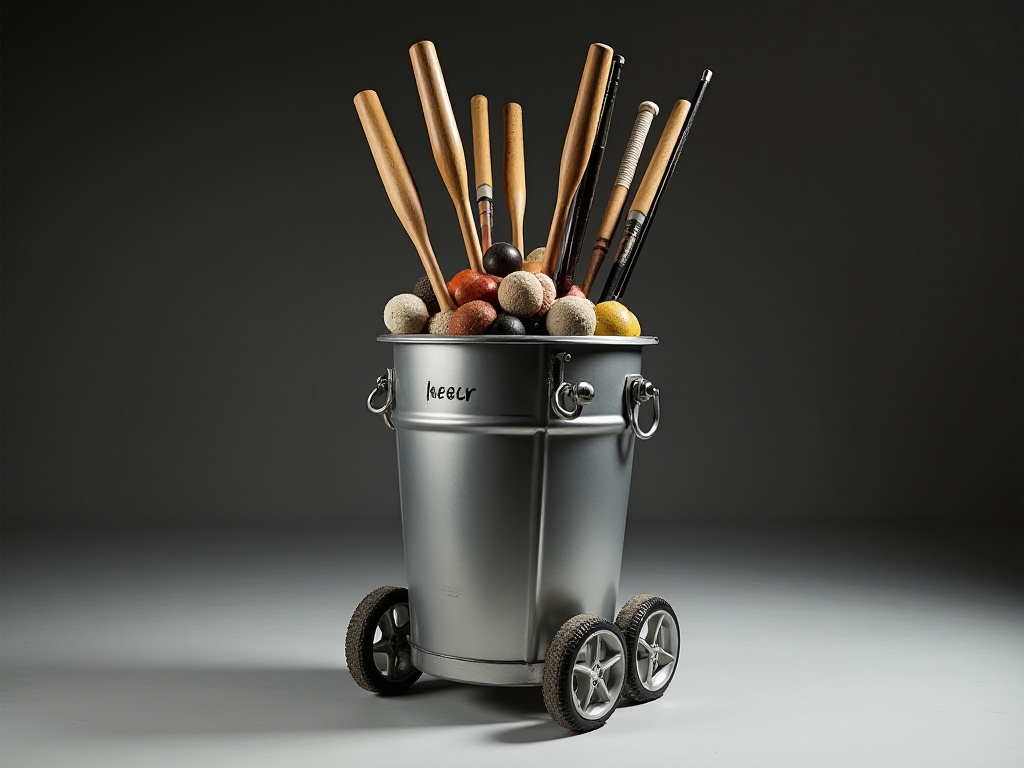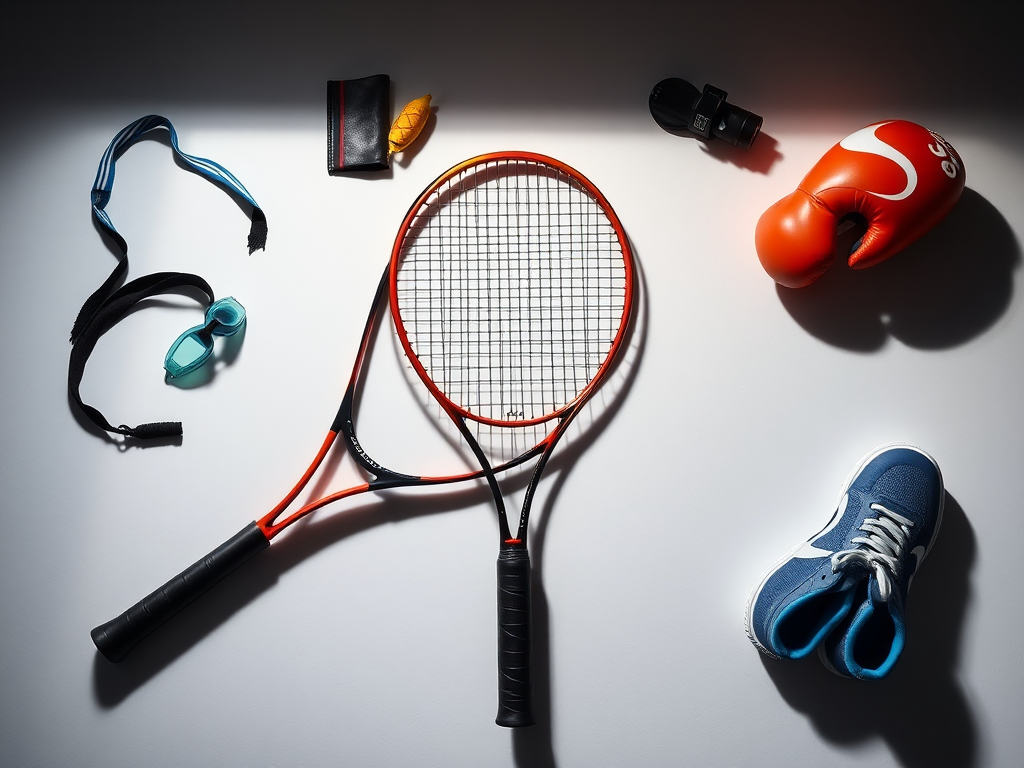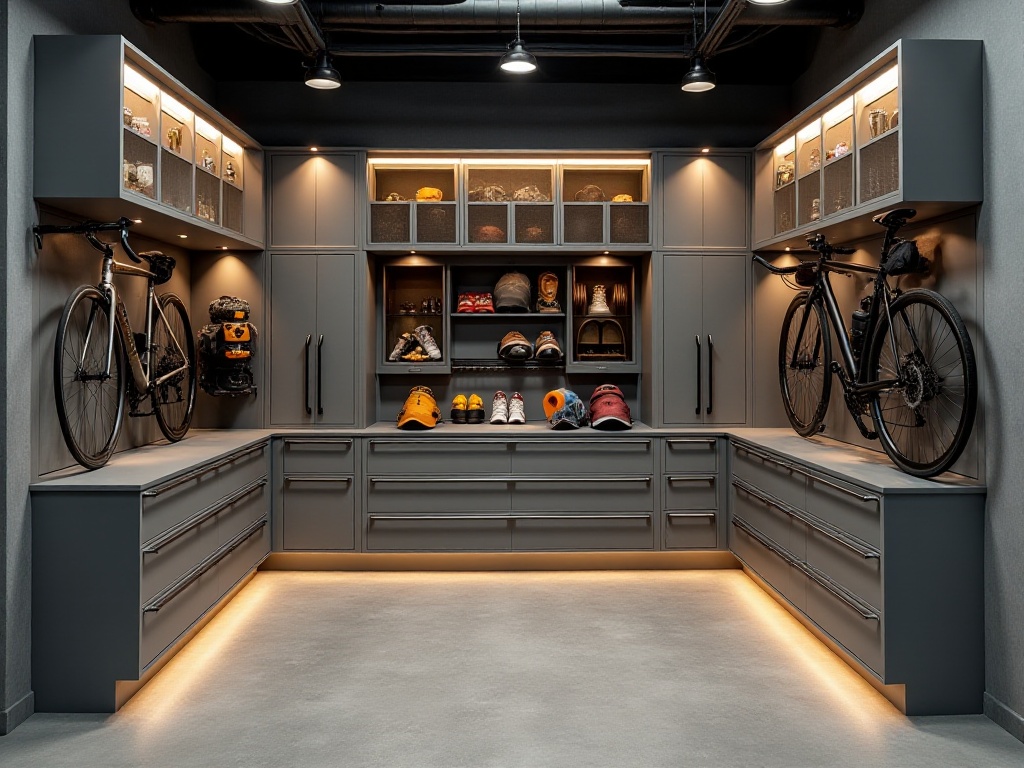Introduction
Struggling to store equipment after every workout? Have more and more sports gear at home but can't find a good storage solution? Basketballs and soccer balls lying around, tennis and ping pong rackets with no proper place, and sports shoes scattered everywhere. As a sports enthusiast, I deeply understand the importance of storage. After years of exploration and practice, I've developed a complete storage solution that I'd like to share with everyone today on how to efficiently store various sports equipment and create a neat and organized sports space.
Wall Space Utilization
When it comes to storing sports equipment, wall space is often overlooked. Actually, walls are an ideal storage area, especially for young renters like us - making good use of wall space is the key to successful home storage.
I installed a multi-functional storage rack on my garage wall that can hang various balls, rackets, and sports bags. This not only saves floor space but also allows you to see all equipment at a glance. Most importantly, this storage method is perfect for those of us who exercise frequently - you can find whatever equipment you need with just one look, no more rummaging through everything.
Based on my experience, a 2m × 1.5m wall storage rack can solve about 80% of sports equipment storage problems. My wall rack is divided into three areas: the upper section for rarely used equipment like skis and surfboards; the middle section for frequently used balls and rackets for easy access; and the lower section for sports bags and small items.
Additionally, proper installation of the wall rack is crucial. I recommend choosing strong expansion screws and preferably a metal rack for better durability. Pay attention to leveling during installation, or it will look off. I also placed anti-vibration pads under the rack so that even if equipment is accidentally bumped, it won't make much noise.
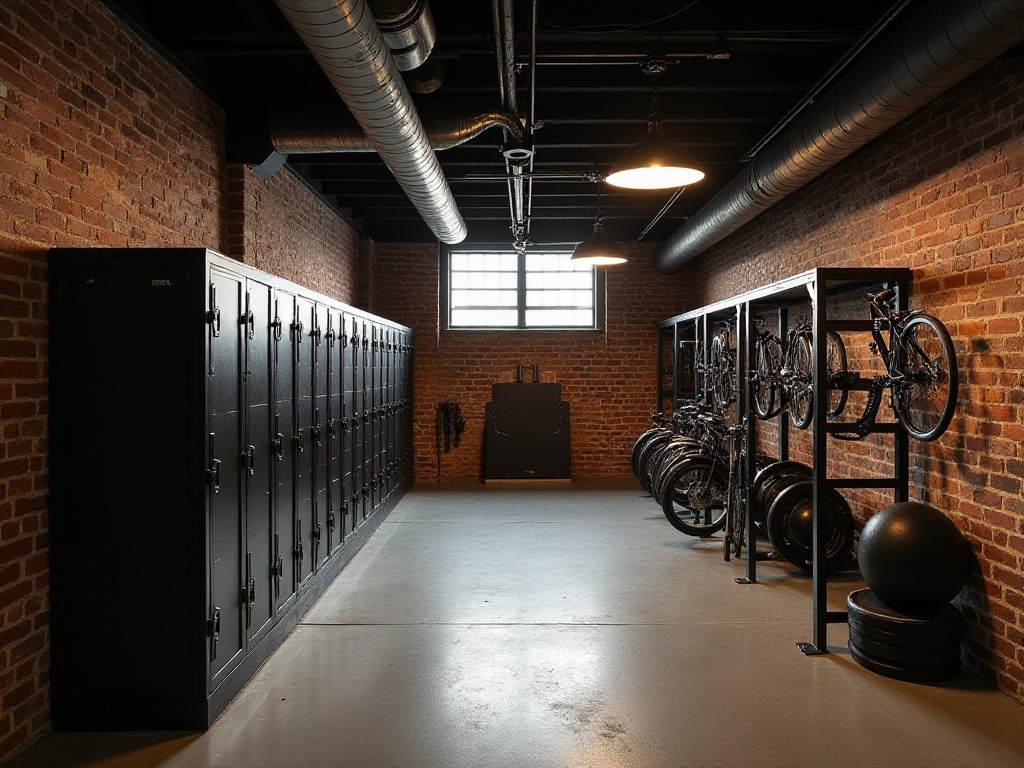
Sky Garden
When developing storage space, many people overlook a super practical area - the ceiling. Yes, that space right above our heads. By installing sliding storage boxes or suspended storage racks, you can store rarely used sports equipment up there. This trick is absolutely perfect for those with limited room space!
I installed a sliding storage system in my garage that can easily store various seasonal sports equipment. For example, storing ski gear in summer and surfboards in winter. Each storage box is labeled for easy identification when needed. The biggest advantage of this system is that the height can be adjusted as needed, making it very flexible.
There are several key points to consider when choosing a ceiling storage system. First is the load-bearing capacity - make sure to choose professional installation teams to ensure secure installation. Second is dust prevention - recommend choosing storage boxes with lids to effectively prevent dust accumulation. Finally is accessibility - I chose a system with wheels that allows easy lowering of storage boxes, making it particularly convenient to use.
My ceiling storage system has a special feature - moisture-proof bags installed on the outside of the storage boxes. Sports equipment is especially susceptible to moisture, particularly during the rainy season. Without proper moisture protection, it can easily get moldy and damaged. With this method, my sports equipment stays dry even after long-term storage.
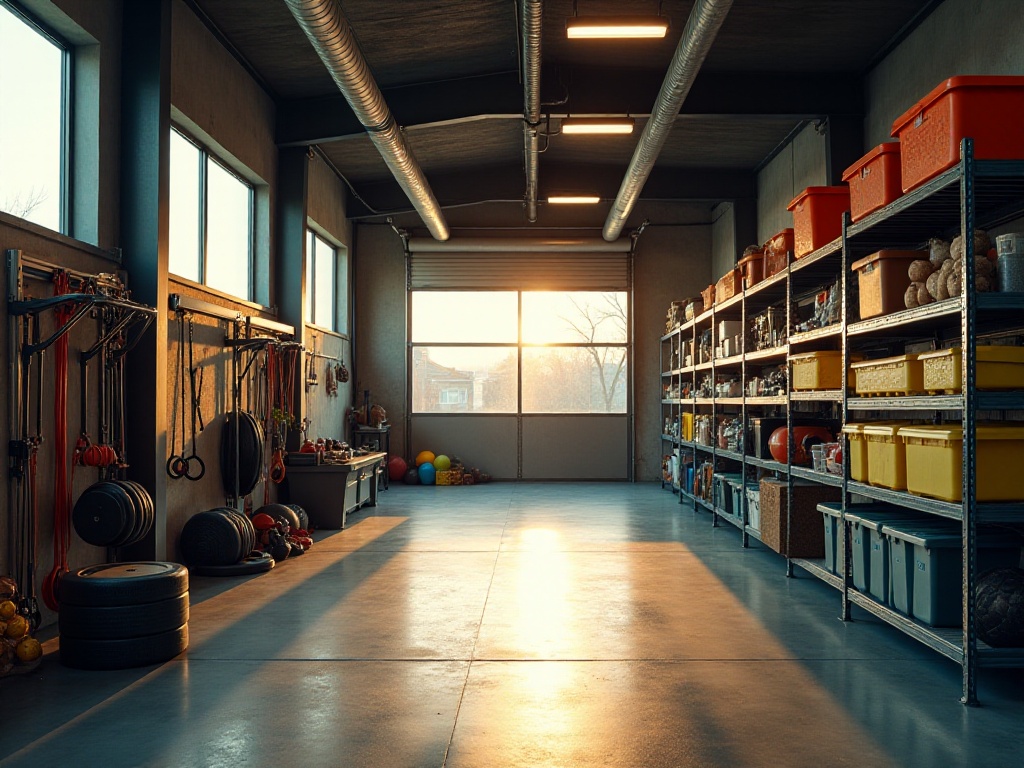
Mobile Solutions
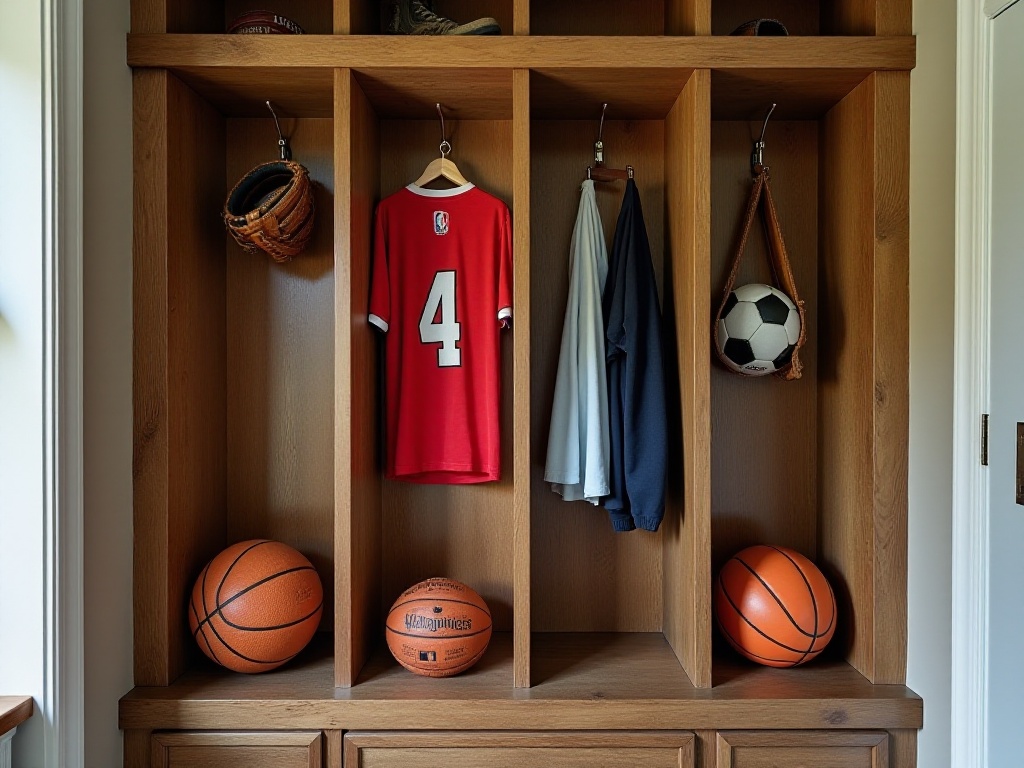
Car Storage
As someone who frequently participates in outdoor sports, car storage is definitely my must-have solution. After multiple attempts, I've found that foldable storage boxes are the most practical choice. They not only neatly store various sports equipment but can also be folded to save space when not in use.
My car storage system is divided into three parts: trunk, roof rack, and behind the seats. The trunk mainly holds frequently used items like balls and rackets - I use a compartmentalized storage box to prevent equipment from colliding. The roof rack is mainly for larger equipment like skateboards and surfboards. Behind the seats, I've installed special storage bags for small items like protective gear and towels.
It's particularly important to note that car storage must be properly secured. I once had a basketball bounce off the windshield when going over a speed bump because it wasn't secured properly, almost causing an accident. Now I always secure equipment with elastic cords or Velcro straps, which is much safer.
Additionally, car storage needs protection from sun exposure. High temperatures from direct sunlight in summer can cause equipment to deform or damage. I add a sun shield over the storage boxes to effectively prevent equipment from sun damage.
Smart Storage
Speaking of storage, we can't ignore the trending smart storage products. Although they're a bit pricey, the user experience is really great. My favorites include shoe storage boxes with deodorizing functions and ball storage cabinets with automatic humidity control.
For example, the smart ball storage cabinet I bought not only controls humidity but also has UV sterilization. Every time you put balls in, it automatically starts working, maintaining ball elasticity while sterilizing. Although it seemed a bit luxurious at first, I found it really worth it after using it.
Especially for those of us who exercise frequently, equipment maintenance is really important. While smart storage products require a larger initial investment, they can extend equipment life in the long run, making them a cost-effective choice.
I also got a smart sports equipment management system that lets me check the storage location and status of various equipment through a mobile app. The system also regularly reminds me to check and maintain equipment, which is a blessing for someone as forgetful as me.
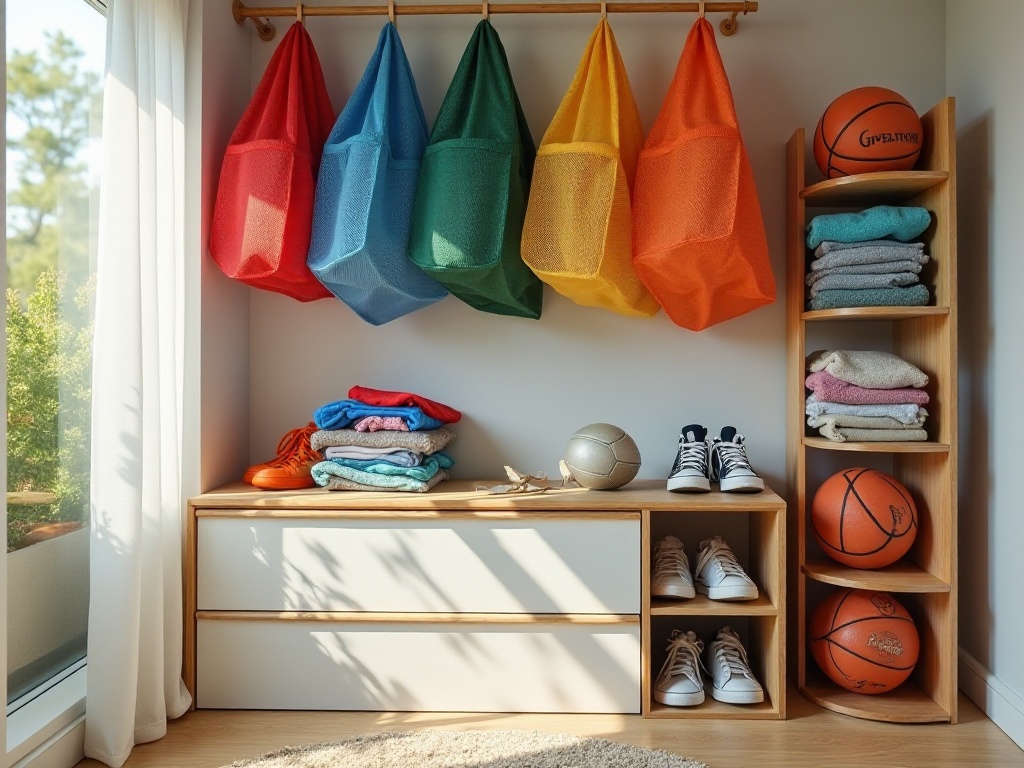
Storage Principles
Categorized Storage
The most important principle in storing sports equipment is categorized storage. Through years of practice, I've developed a classification method that works best for me. First, organize by sport, putting all basketball-related equipment together, tennis-related items together, etc. This not only makes things easier to find but also helps you better understand the usage frequency of various equipment.
Specifically, my classification method works like this: First, divide equipment into three categories based on usage frequency: frequently used (weekly), occasionally used (several times monthly), and seasonally used (specific seasons only). Then within each category, subdivide by sport. For example, in the frequently used category, there are basketball, soccer, and tennis sections.
The advantage of this classification method is that you can adjust storage locations based on usage frequency. Frequently used items are stored in the most accessible places, while seasonal items can be stored in higher or more distant locations. This saves time and improves space utilization.
In practice, I've found that a labeling system is particularly important. I label each area clearly, indicating what items are stored there. This makes it easy not only for me to find things but also for family members to help with storage. I use erasable labels so the storage plan can be adjusted when needed.
Regular Organization
Having a good storage system isn't enough; regular organization is equally important. I suggest doing a thorough organization quarterly to check if equipment is in good condition and clear out unused items. Although this process can be troublesome, it's really necessary.
I usually do major organizing during seasonal changes. For example, when spring arrives, I put away winter ski equipment and bring out spring equipment. When organizing, I use the "three-way method": continue using, needs repair, clear out. For equipment needing repair, I handle it immediately rather than putting it off. For unused equipment, I consider donating or selling second-hand, which is both environmentally friendly and helps others.
During organization, I've found that many equipment damages are actually caused by improper storage. For example, storing rackets vertically can cause string deformation; basketballs can lose elasticity if compressed for long periods. So during organization, I pay special attention to the correct storage method for each type of equipment.
Maintenance Tips
Daily Care
Different sports equipment needs different maintenance methods. As a sports enthusiast, I've developed a detailed maintenance plan. First for balls, they need regular inflation and cleaning. I generally check air pressure before each use and wipe with a clean towel after use. Especially after outdoor play, dust must be cleaned promptly.
Racket maintenance is also crucial. I regularly check string tension and adjust when necessary. Use racket covers for storage and avoid moisture. In humid seasons, I put desiccant packets in the racket covers.
Sports shoes require the most care. After each workout, I use a brush to clean dirt from the soles and wipe the uppers with a clean cloth. If shoes have odors, I use professional deodorizing spray. When drying, ensure good ventilation but avoid direct sunlight, which can affect shoe durability.
For special equipment like skateboards and roller skates, regularly check the condition of bearings and wheels. I do a deep clean monthly, oiling the bearings to ensure safe use.
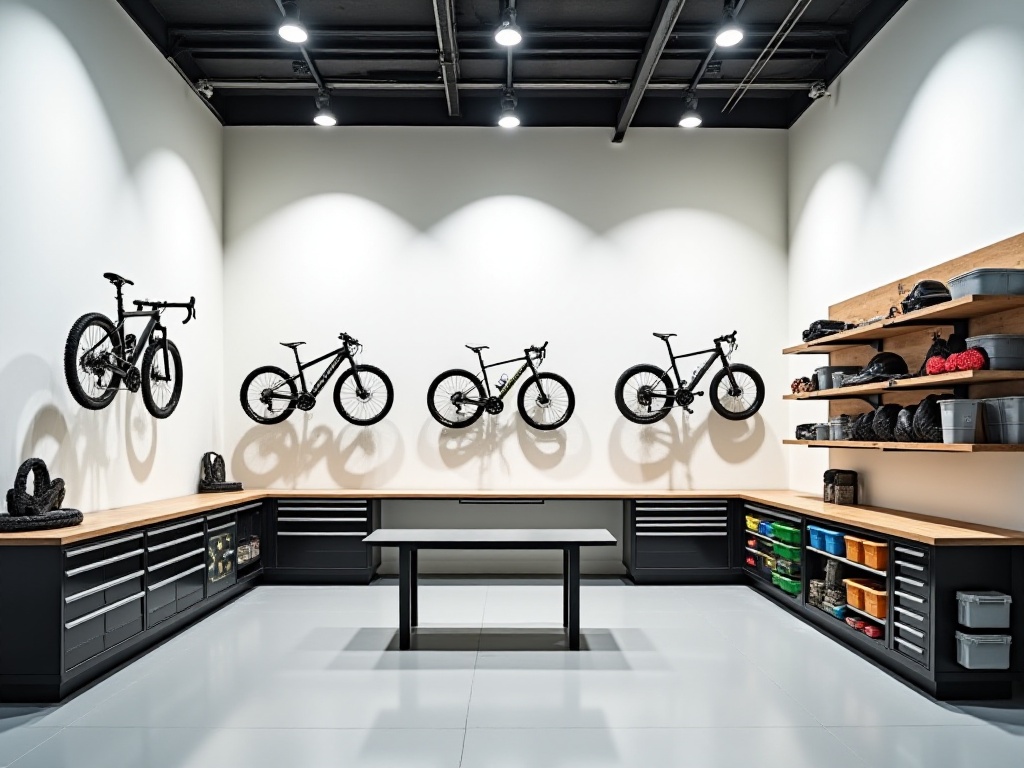
Conclusion and Outlook
Through years of practice, I deeply understand the importance of a good storage system for an active lifestyle. It not only keeps your home neater but also maintains equipment in optimal condition, improving the exercise experience. Plus, seeing your sports equipment neatly arranged gives you a great sense of achievement!
Storage isn't unchangeable; it needs constant adjustment and optimization based on personal circumstances. The methods I've shared are just references - you can adjust them according to your needs, such as room size, budget, and usage frequency.
Most importantly, develop good storage habits. Put equipment back in place after each workout and check and maintain regularly - this is how to truly realize the value of storage. Believe that through these methods, you can also create a perfect sports equipment storage space!




